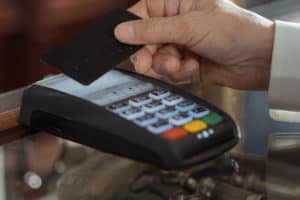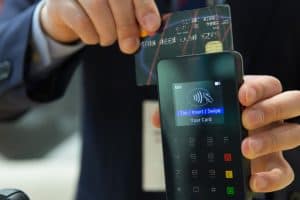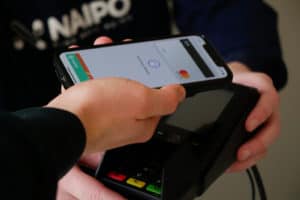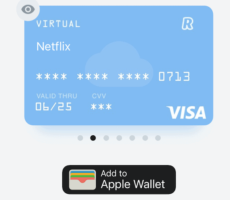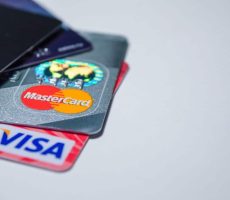Debit cards have become a convenient payment method for millions of people worldwide. However, issues with the card’s CVV can cause frustration and inconvenience while making online transactions.
In this article, we’ll explore common CVV-related problems and provide solutions to keep your transactions hassle-free.

How Do You Find the CVV on Your Debit Card?
The CVV on your debit card is a three-digit security code that helps protect your card against unauthorized use. You can typically find the CVV printed on the back of your debit card, usually on the signature strip.
On some cards, the CVV may be printed on the front, near the card number. If you’re having trouble locating the CVV, try flipping your card over and checking the back first.
Why Is the CVV Important for Online Transactions?
The CVV is an essential security feature for online transactions. It serves as an additional layer of verification beyond your card number and expiration date, helping to protect against fraud and unauthorized use.
By requiring the CVV, online merchants can confirm that the person making the transaction is in possession of the actual card, reducing the risk of fraudulent purchases. So, always ensure to provide your CVV during online transactions to keep your debit card safe and secure.
What Are Some Common Reasons for CVV Errors?
CVV errors can occur for a variety of reasons, but some of the most common include:
- Mistyping the code
- Using an expired card
- Entering an incorrect CVV
- Strict CVV requirements set by merchants
- Card issuer blocked the CVV due to suspicious activity on the account
To avoid CVV errors, make sure to double-check the code and ensure that your card is up-to-date.
Can You Make Transactions Without Providing a CVV?
While some online merchants may allow you to complete a transaction without providing a CVV, most require this security code to be entered before the transaction can be processed.
This is because the CVV serves as an additional layer of security that helps confirm the card is in the hands of the actual cardholder.
While it may be possible to make transactions without providing a CVV in some cases, it’s not recommended as it increases the risk of fraud and unauthorized use of your card. So, it’s always best to provide your CVV whenever requested during an online transaction.
Is It Possible to Change the CVV on Your Debit Card?
No, it’s not possible to change the CVV on your debit card. The CVV is generated randomly and is unique to each card. It is a security feature that helps protect against fraud and unauthorized use.
While you can change your debit card number, expiration date, and other details, the CVV remains the same. If you suspect that your CVV has been compromised, it’s best to contact your card issuer immediately to report the issue and request a replacement card.
How Can You Prevent Your CVV From Being Stored Online?
To prevent your CVV from being stored online, it’s important to be mindful of the websites you use for online transactions. Avoid saving your card details on websites that don’t have a secure connection or those you don’t trust.
Also, make sure to log out of your account after each transaction and clear your browser cache to remove any saved information.
Another way to protect your CVV is by using a virtual card or a one-time-use card number for online transactions. These types of cards generate a unique card number and CVV for each transaction, making it more difficult for fraudsters to obtain your actual card details.
Lastly, keep your debit card safe and secure by storing it in a safe place and never sharing your card details with anyone, especially online or over the phone.
Can You Get a New Debit Card if Your CVV Is Permanently Blocked?
If your CVV has been permanently blocked by your card issuer due to suspicious activity or fraud, you’ll likely need to request a new debit card. This is because the CVV is a security feature that cannot be changed, and a blocked CVV can affect your ability to make online transactions.
To request a new debit card, contact your card issuer as soon as possible and explain the situation. They will guide you through the process of getting a new card and may also advise you on steps you can take to protect yourself from fraud in the future.
It’s important to act quickly to minimize any potential damage to your finances and personal information. Check our other articles on similar issues, such as when your card isn’t working in shops, or the card got damaged, as well as some tips to see if your card is working.
FAQs
What to do if you suspect your CVV has been compromised?
If you suspect your CVV has been compromised, immediately contact your card issuer to report the issue and request a new card. They may also advise you to monitor your account activity for any suspicious transactions.
Should you provide your CVV over the phone for transactions?
We do not recommend providing your CVV over the phone for transactions, as this increases the risk of fraud and unauthorized use of your card. If you’re unsure about the legitimacy of the caller, hang up and contact the company directly using a verified phone number.
How to check if your CVV is still valid?
There’s no way to check if your CVV is still valid, as it’s not publicly accessible information. However, if you’re experiencing issues with online transactions, double-checking the CVV you’ve entered and ensuring that your card is up-to-date may help resolve the issue.




